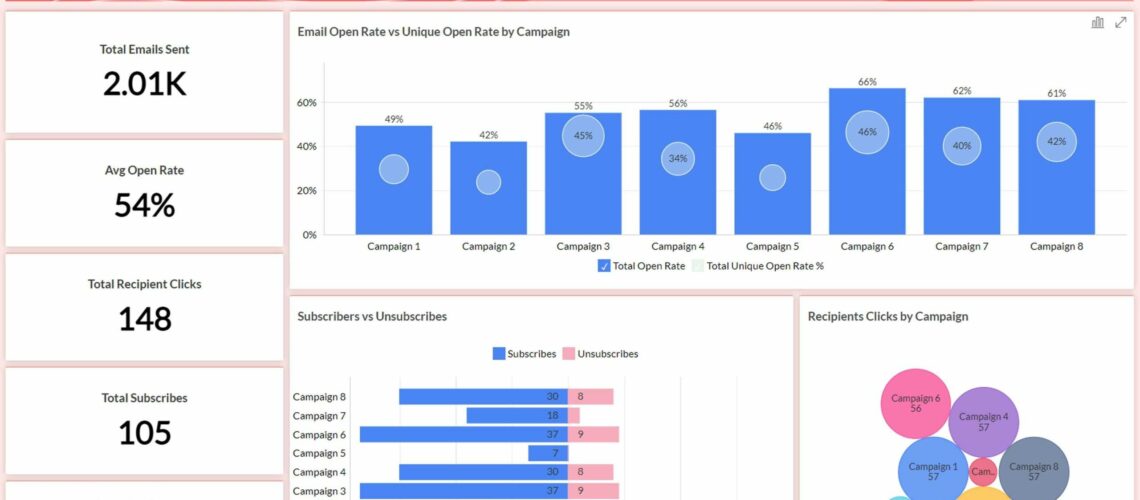Email Marketing
The nice thing about email marketing is that it’s straightforward. It’s as simple as sending an email, and we’ve all sent a lot of emails in our lives, and we’ve surely received probably more emails than we’d like to. That’s an excellent first step for working within the email marketing channel because it means we all are familiar with what constitutes a good email. We interact with these things; we see these things all the time.
Three Major Pieces of An Email
It starts with who you are sending your email to if you’re aware of your audience, you know, the kind of things you need to be delivering to them. A subject line is a short description of what you’re sending, and your content will be the reason or the information you’re trying to send.
If we understand those three simple ideas, we’ll ensure that we’re always sending good emails to our prospects or customers.
Email Samples
I’m going to just kind of go over a few emails that I’ve seen. That I think is cool, the first one is from this bookstore, the largest independent bookstore in the US company called Powell’s. They’re based out of Oregon, and I buy stuff from them occasionally, and then they send me emails. This is a standard email that someone might send, which I would call a promotional email—promoting the fact that they have free shipping if I use a code, and they’re trying to get me to click on the big graphic drives me to their website so that I can use the free shipping code. I’ll buy some books. This is a standard promotional email we would be sending if we’re trying to boost some sales. It looks good on mobile, it works on the web, it’s a very simple email, and I know exactly what I need to do when I see this. I need to click the big graphic.
Need help sending marketing emails in bulk on a lawful basis on Zoho Campaigns?
Schedule a free consultation with our Zoho Campaigns specialists!

This next email is an older example, but it’s one that I think is cool, and it’s from this company called reformation. They do women’s apparel, reformation they do women’s apparel, and they’re eco-friendly. Their brand identity is simple; they have that kind of black font reformation. As I move through the slides, this is going to kind of simulate scrolling. This is how the email looks when you open it striking a model wearing their clothes. It looks really pretty, though, and, you know, it’s not a Victorian collection. It’s pretty affordable, something that you can buy, and then, of course, it reminds you that there’s free shipping worldwide, and now you can click on one of those pictures, and it’ll take you to the website so that way you can start shopping, right? And they’re playing off this whole fake news thing. Basically, this is something they had done that was newsworthy and topical at the time, and it’s still something that would have been, and it doesn’t look like an email I’ve ever.
The last example is an email from Airbnb; once we’re all familiar with this company, it allows us to travel and book accommodation in other cities. I used to live in san Francisco; it says, you know, you’re probably a well-versed San Franciscan. Here are some things you can do this valentine’s day in san Francisco. Interesting idea here, because they’re trying to tell me about fun things, I could be doing in the city I live in and I think when you think about it makes a lot of sense. Because if they could, if they could show me a good time in the city I already live in, chances are I’m going to think that Airbnb is going to be good if I go somewhere where I know absolutely nothing about that place, right? Right, it makes a lot of sense if someone could show. They’re probably going to be able to show you a good time if you go somewhere crazy like Tokyo or Italy or something, and so this is, of course, has a bunch of links that’s just showing me fun stuff I can do.
These are just a few of the things we can do. It’s very flexible; we can build an audience, onboarding, re-engagement, post-sale surveys, event marketing, promotional campaigns, etc. Email is a good way to try to communicate with people and drive them to do something or create engagement.
Especially the reason why I put customer newsletters at the bottom is that there’s always this idea that we’ll create a newsletter that’s the default email marketing option. Yeah, that can be a good idea if you have some expertise you want to share, or you can communicate some value through a newsletter. But there are a lot of these other options that you can use email for that can also create just a lot of value.
That said, this idea of creating value doesn’t bug the people. Don’t bother them, don’t annoy them, don’t harass them, don’t buy mailing lists and upload that into the system and say, everyone, will hear about my business. I mean, that’s not helping anyone out; if I came to your house later this evening and decided to tell you all about Zoho, you’d probably be like, hey, I need you to leave my property; you want to get permission to use people’s information. It’s important that we use, the data that we get in the appropriate way. And this can be something obvious, as far as flagrant as like, buying mailing and using those where you’ve bought my data, and I’ve never contacted you or anything, but it could also be something that’s a little more of a gray area. So, for example, we meet after this, and you get my business card, and I say, hey, you know, call me if you have any campaign questions; I am happy to talk to you. Say you called me at 2:00 a.m. You want to talk to me about my plans next weekend on a Friday night. I would kind of wonder why on earth this call is happening. But that’s not the context in which I gave you my information. The fact that you’re saying, well, you gave it to me, I can use it for this, is not true. Sometimes there are those gray areas where you say we have all these emails; we should start blasting them again. Is that really what those people signed up for?

And it’s important to make that distinction because you’re going to piss people off and annoy them. Two, you will hurt the services you’re using, like Zoho campaigns, if everything you send is constantly getting marked as spam. It hurts you and other people as well, it’s something that doesn’t make a lot of sense, and ultimately you know you end up getting emails like that. You try to get off those lists, and you wonder why I can’t get this business to stop emailing me or why those people keep telling me all this crazy stuff.
It’s because that’s what we do to people, so it’s like this weird little cosmic karma. Make sure you’re getting permission and not spamming; on the flip side, give the people what they want. Make sure that you are offering value. Offer value, create value, and find new ways to do interesting things for your customers or prospects, which ultimately ends up being good marketing.




